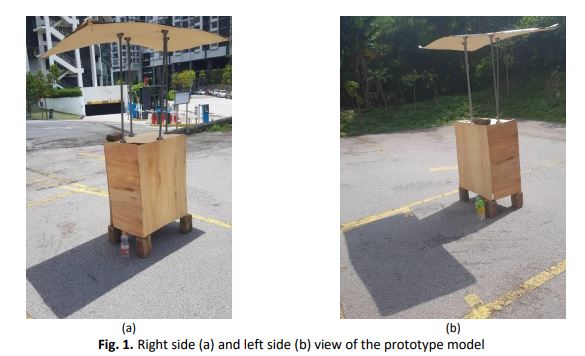Reducing the Energy Cost of Buildings Using Shading Plates: Experimental and Numerical Study
DOI:
https://doi.org/10.37934/arfmts.94.2.112Keywords:
Saving energy, shading effect, SketchUp, tropical climateAbstract
The amount of carbon emission pumped into the atmosphere has led to a rise in global temperature. Rapid urbanization increased the use of air conditioners, resulting in the urban heat island effect. The use of environmentally friendly methods in reducing energy consumption for buildings is needed now more than ever. This study aims to evaluate the cooling load of a prototype by installing a shading plate above its roof at a height of 0.67m. A wooden panel with an attached aluminium sheet is used as a shading plate, 2m by 0.9m. The prototype with a dimension of 0.80m (L) x 0.50m (W) x 0.97m (H) is a scaled-down model of the guardhouse located near Block E, UCSI University. Along with the shading plate, the prototype is placed nearby the guardhouse to validate the actual guardhouse's exact condition. The shadow acts as an insulator to the prototype. There were two devices used for data collection; a VELOCICALC thermometer to measure the air velocity and air temperature and an infrared thermometer to measure the profile temperature of the room walls, roof, and floor. To ensure the prototype is adequately ventilated, it was placed 20 cm above the floor using red bricks from 9 a.m. to 5 p.m, a maximum temperature reduction of 4.5°C when the shading plate thoroughly shades the room. A total of 14.5% electricity cost can be reduced monthly when the guardhouse is fully shaded from 11 a.m. to 2 p.m. In contrast, both the actual guardhouse and the prototype model can receive full sunlight from 11 a.m. to 5 p.m., while from early morning till 11 a.m., the guardhouse is fully shaded by the UCSI Block E building.
Downloads

































